
MULTIMEDIA TOOLS AND APPLICATIONS
Scope & Guideline
Pioneering insights in multimedia tools and their applications.
Introduction
Aims and Scopes
- Multimedia Processing and Enhancement:
Research on methods for enhancing multimedia content, including image, video, and audio processing techniques such as denoising, enhancement, compression, and watermarking. - Machine Learning and Deep Learning in Multimedia:
Application of machine learning and deep learning techniques for various multimedia tasks, including object detection, image classification, emotion recognition, and medical image analysis. - Security and Privacy in Multimedia Systems:
Exploration of security measures, encryption techniques, and privacy-preserving methods for multimedia data, ensuring the safe transmission and storage of sensitive information. - Human-Computer Interaction and User Experience:
Studies focused on improving user interaction with multimedia systems, exploring areas such as gesture recognition, augmented reality, and user interface design. - Multimodal and Cross-Domain Applications:
Research that integrates multiple forms of media (text, image, audio) and explores their applications across various domains, such as healthcare, education, and entertainment. - Remote Sensing and Environmental Monitoring:
Utilization of multimedia tools for environmental analysis, including satellite imagery processing, vegetation classification, and pollution monitoring. - Real-time Systems and IoT Integration:
Investigations into real-time multimedia processing systems, especially in the context of the Internet of Things (IoT), focusing on applications in smart cities and healthcare.
Trending and Emerging
- AI and Deep Learning Applications:
There is an increasing focus on leveraging AI and deep learning for multimedia applications, particularly in areas such as object detection, speech recognition, and medical diagnostics. - Real-time Video Processing and Analysis:
Emerging research in real-time video processing for applications such as surveillance, crowd monitoring, and autonomous vehicles is gaining traction. - Augmented and Virtual Reality:
Research exploring the applications of augmented and virtual reality in education, training, and healthcare is on the rise, reflecting the growing interest in immersive technologies. - Multimodal Learning and Fusion Techniques:
The trend towards integrating multiple data modalities (text, audio, video) for improved analysis and understanding is becoming increasingly prevalent. - Sustainability and Environmental Monitoring:
Papers addressing the use of multimedia tools for environmental monitoring and sustainability practices are emerging, highlighting the role of technology in addressing climate change. - Privacy and Ethical Considerations in AI:
An increasing number of studies are focusing on the ethical implications of AI in multimedia applications, including privacy concerns and bias in algorithms.
Declining or Waning
- Traditional Multimedia Compression Techniques:
Research focusing on older compression algorithms and techniques appears to be waning as newer, more efficient methods are developed and adopted. - Basic Image Processing Techniques:
Papers centered around fundamental image processing methods such as histogram equalization and basic filtering are less prominent compared to advanced deep learning approaches. - Non-AI-Based Multimedia Tools:
There is a noticeable decrease in the exploration of multimedia applications that do not integrate AI or machine learning, as the field moves towards intelligent systems. - Static Multimedia Applications:
Research related to static applications of multimedia tools (e.g., basic image editing) has diminished as dynamic and interactive applications gain more attention. - Conventional Security Protocols:
The focus on traditional security protocols for multimedia data has decreased as researchers shift towards more innovative, adaptable security measures that incorporate AI.
Similar Journals

Journal of Signal Processing Systems for Signal Image and Video Technology
Connecting Ideas and Innovations in Signal Processing and Engineering.Journal of Signal Processing Systems for Signal Image and Video Technology, published by SPRINGER, is a leading interdisciplinary journal dedicated to advancing research and development in the fields of signal processing, image processing, and video technology. With an ISSN of 1939-8018 and an E-ISSN of 1939-8115, this journal emphasizes both theoretical and practical applications, boasting a wide scope that ranges from control and systems engineering to hardware architecture. Since its inception in 2008, it has gained a solid reputation, reflected in its 2023 category quartile rankings—including Q2 in Control and Systems Engineering and Q3 in Signal Processing—demonstrating its significance within the academic community. The journal is underpinned by a commitment to open access, promoting broad dissemination of knowledge, and is particularly vital for researchers, professionals, and students looking to contribute to and stay updated in these rapidly evolving fields. With ongoing explorations into the convergence of technology and methodology until 2024, the journal stands as a crucial resource for the latest innovations and discussions in signal processing systems.

IMAGE AND VISION COMPUTING
Unveiling the future of signal processing and computer vision.Image and Vision Computing, published by Elsevier, serves as a leading international journal focused on the dynamic fields of computer vision, pattern recognition, and signal processing. With its esteemed Q1 category rankings in these areas and an impressive standing in Scopus metrics, where it ranks 19th in Computer Vision and 23rd in Signal Processing, this journal has firmly positioned itself at the forefront of academic research and innovation. Established in 1983, it continues to publish cutting-edge research that drives advancements in technology and applications across various domains. The journal is committed to disseminating high-quality, peer-reviewed articles that address significant challenges and propose novel solutions, making it an essential resource for researchers, practitioners, and students alike. While not an open access journal, Image and Vision Computing offers a wealth of valuable insights into the ever-evolving landscape of visual computing technologies.

International Arab Journal of Information Technology
Connecting Scholars to Transform the Tech WorldWelcome to the International Arab Journal of Information Technology, a prestigious publication under the aegis of ZARKA PRIVATE UNIVERSITY in Jordan, dedicated to advancing the field of Information Technology. First established in 2008, this journal has made significant strides in disseminating high-quality research, achieving an impressive Q2 ranking in Computer Science (miscellaneous) and securing a notable 57th percentile position in the Scopus rankings. With a comprehensive scope encompassing various sub-disciplines of computer science, the journal is committed to promoting scholarly dialogue and innovation among researchers, professionals, and students. While currently operating as a subscription-only journal, it remains a vital resource for the academic community seeking to explore the latest trends and advancements in technology. The International Arab Journal of Information Technology is not only a platform for original research but also a vibrant hub for ideas that shape the technological landscape of the Arab region and beyond.
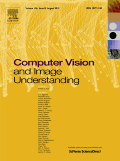
COMPUTER VISION AND IMAGE UNDERSTANDING
Charting New Territories in Image UnderstandingCOMPUTER VISION AND IMAGE UNDERSTANDING is a leading academic journal published by Academic Press Inc, Elsevier Science, dedicated to the advancement of the fields of computer vision, image understanding, and pattern recognition. Since its inception in 1993, this esteemed publication has garnered a reputation for excellence, achieving a remarkable Q1 ranking in the categories of Computer Vision and Pattern Recognition, Signal Processing, and Software as of 2023. With its robust impact factor and high visibility in the scientific community—ranking #22 out of 106 in Computer Vision and Pattern Recognition and #27 out of 131 in Signal Processing—this journal serves as a vital resource for researchers, professionals, and students looking to explore and contribute to state-of-the-art developments. Although it does not operate under an Open Access model, its rigorous peer-reviewed content ensures quality and relevance in a rapidly evolving technological landscape. The journal’s commitment to fostering innovation makes it an essential tool for anyone engaged in the study and application of computer vision technologies.

IEEE MULTIMEDIA
Elevating the standards of multimedia scholarship.IEEE Multimedia, published by IEEE Computer Society, is a prestigious journal dedicated to advancing the fields of multimedia technology and innovations in computing. With an ISSN of 1070-986X and an E-ISSN of 1941-0166, the journal has established a significant impact within the academic community, holding an impressive ranking in various categories: Q2 in Computer Science Applications, Hardware and Architecture, Signal Processing; Q1 in Media Technology; and Q2 in Software as of 2023. Spanning from 1994 to 2024, IEEE Multimedia strives to publish cutting-edge research and development findings, focusing on the convergence of multimedia with engineering and computing disciplines. Researchers and professionals across these domains are encouraged to engage with its rigorously peer-reviewed content, enhancing their understanding and application of multimedia methodologies in their respective fields.
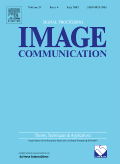
SIGNAL PROCESSING-IMAGE COMMUNICATION
Transforming Ideas into Visual SolutionsSIGNAL PROCESSING-IMAGE COMMUNICATION, published by Elsevier, is a leading journal in the fields of Computer Vision, Signal Processing, and Electrical Engineering. With an impressive range of Quartile rankings in 2023, including Q1 in Electrical and Electronic Engineering and Q2 in Signal Processing, this journal is vital for researchers and professionals seeking the latest advancements and comprehensive studies in image communication technologies. Issued in the Netherlands, SIGNAL PROCESSING-IMAGE COMMUNICATION has been an essential resource since its inception in 1989, fostering innovation and collaboration among academia and industry. The journal provides a platform for high-quality peer-reviewed research, addressing significant challenges and solutions in the convergence of image processing and communication. Although currently not an Open Access journal, it offers subscription options that ensure a broad dissemination of groundbreaking knowledge. With a robust reputation reflected in its Scopus ranks, this journal serves as an indispensable reference for students and experts aiming to stay at the forefront of developments in this dynamic field.
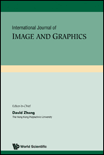
International Journal of Image and Graphics
Illuminating the Path to Visual ExcellenceInternational Journal of Image and Graphics, published by World Scientific Publishing Co. Pte Ltd, serves as an essential platform for scholars and practitioners in the realms of Computer Graphics, Computer-Aided Design, and Computer Vision and Pattern Recognition. Established in 2001 and based in Singapore, this journal has become increasingly influential, with a reputation reflected in its Q3 and Q4 rankings across key categories in Scopus, highlighting its growing impact in the academic community. Open access options remain limited; however, the journal's commitment to disseminating high-quality research allows for a rich exchange of ideas among professionals and students alike. As the 2023 metrics indicate, contributions to the journal not only enhance individual academic portfolios but also promote advancements in image processing, fostering innovation and growth within the discipline until at least 2024. It is thus a vital resource for anyone looking to deepen their knowledge and understanding of contemporary trends and technologies in image processing and related fields.

International Journal of Mobile Computing and Multimedia Communications
Unveiling Trends in Mobile Computing ExcellenceThe International Journal of Mobile Computing and Multimedia Communications, published by IGI Global, stands at the intersection of technology and connectivity, addressing the critical advancements in mobile computing and multimedia communications. With an ISSN of 1937-9412, this journal provides a platform for the dissemination of innovative research findings and insights, fostering collaboration and communication among researchers, professionals, and students within the field. Although currently indexed in the Q4 quartile for 2023 in Computer Networks and Communications, its rich archive of articles from 2009 to 2014 and 2016 to 2024 reflects the journal's ongoing commitment to exploring emerging trends, technologies, and methodologies that shape the future of mobile computing. While it is not an open-access journal, the high-quality research published here is crucial for advancing academic discourse and practical applications in an increasingly digital world. By encouraging submissions across a wide range of topics, International Journal of Mobile Computing and Multimedia Communications continues to enhance its reputation as a pivotal resource for scholars and industry experts alike.
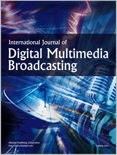
International Journal of Digital Multimedia Broadcasting
Empowering Knowledge in Digital BroadcastingThe International Journal of Digital Multimedia Broadcasting is a leading scholarly platform dedicated to the interdisciplinary exploration of digital multimedia broadcasting, published by HINDAWI LTD. With an ISSN of 1687-7578 and an E-ISSN of 1687-7586, this Open Access journal has made significant strides since its inception in 2008, ensuring wide accessibility and dissemination of research. Based in the United States, at Adam House, 3rd Flr, 1 Fitzroy Sq, London W1T 5HF, England, the journal covers a range of topics relevant to Communication, Electrical and Electronic Engineering, and Media Technology, boasting impressive Scopus rankings that highlight its influence in these fields. As part of the Q3 category in Communication and Electrical Engineering, and Q2 in Media Technology for 2023, the journal serves a vital role in fostering the understanding of technological advancements and their applications in multimedia broadcasting. Researchers, professionals, and students are encouraged to contribute to and benefit from the journal's rich repository of knowledge, paving the way for innovative developments in this dynamic industry.
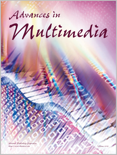
Advances in Multimedia
Transforming Ideas into Multimedia SolutionsAdvances in Multimedia is a dynamic journal published by HINDAWI LTD, dedicated to the ever-evolving field of multimedia research. Since its inception in 2007, this Open Access journal has provided a platform for the dissemination of innovative findings and applications in various aspects of multimedia computing, including image processing, audio-visual technology, and cross-media communication. Although its coverage in Scopus has been discontinued, the journal remains relevant in the academic community, with a focus on fostering new ideas and discussions among researchers and practitioners. With an impact factor reflective of its contributions to the field, Advances in Multimedia plays a crucial role in bridging theoretical and practical applications, enabling scholars and students to engage with cutting-edge topics. This journal serves as a gateway for knowledge, inviting contributions that enhance our understanding of multimedia's impact on both technology and society.